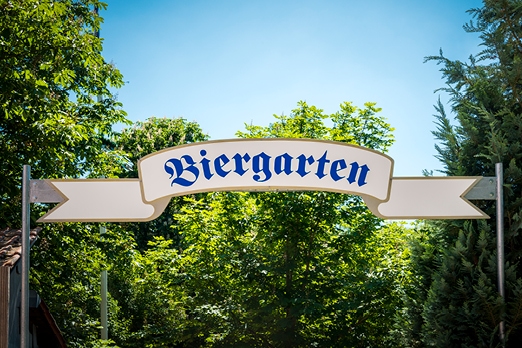Toasting Easter, with a beer!
Easter Beer, le Stagionali perfette ma (quasi) sconosciute al sud delle Alpi.

Easter is just around the corner, and between the lamb, the goat, and the Torta Pasqualina, what beer should you choose for the toast?
Is there a beer dedicated to this holiday?
Don’t worry, the answer is absolutely yes!
When it comes to styles of beer, these days there’s one for every occasion, from the famous and highly esteemed Bière de Noël (or Christmas Beers), to the autumn Chestnut Ales and the all-American Pumpkin Ale, which adds a splash of orange to the spooky night of Halloween.
Easter Beers not only exist, but represent a chapter in brewing history that is as long, ancient, and glorious as it is unknown.
MONKS, BEER, AND FASTING
Easter Beers were created for the fast during Lent, when, in the Middle Ages, the faithful had to abstain from eating for forty days.
It was, therefore, necessary to have a beer that was stronger, thicker, and more nourishing than everyday beer.
Legend has it that the monks, to assuage the pangs of hunger that gripped them during those long weeks, and following Pope Pius V’s rule (“Liquidum non frangit jejunum”, liquids do not violate the fast), prepared rather full-bodied springtime beers… hence, the Easter Beers!
This tradition of preparing wort just in time for the Holy Week is something that continues to this day in many places in Europe.

SCANDINAVIA, THE MOTHERLAND OF EASTER BEER
The origins are rather vague, because it’s difficult to establish with certainty where and when they were first produced. What is certain is that the greatest production and consumption of these beers is concentrated on the Scandinavian peninsula, with recipes that vary from country to country.
These are light, yet full-bodied beers, with grassy and floral aromas, that are perfect for accompanying the traditional dishes of Central Europe, like lamb, hard boiled eggs, and smoked fish.
PASKE ØL, THE DANISH EASTER BEER
The capital of Easter Beer is definitely Denmark, famous for more than just Hans Christian Andersen’s fairy tales and its butter cookies, where we find the Paske Øl, literally Easter Beers.
These were produced in order to be ready about twenty days before Easter and stay fresh throughout the Holy Week.
The Paske Øl are usually ales, meaning beers produced through top fermentation with a medium-low alcohol content that varies between 5% and 5.5% (though some intrepid master brewers push it up to 7%), characterized by a straw yellow, or at most amber color, and thick white foam.
These beers have a strong springtime appeal, both in their grassy and floral fragrance and in their colorful labels, which always feature yellow daffodils.
They are very drinkable beers, suitable for the entire meal and easily paired even with sweets.
Meanwhile, in England and Belgium we find the Easter Ales, these too produced according to the Nordic style, but with opposite alcohol contents; the first under 4%, the second between 9% and 10%.

GERMAN EASTER BEER: SMOKED
Germany is no exception and also has its Lent beers, the Fastenbier.
Originating in Bamberg, Upper Franconia, and also once produced by Monks as a replacement for solid meals, they are, as tradition in this city dictates, Rauchbier, or rather smoked beers.
Legend has it that, due to a fire in the city brewery, which spread and burned down a large part of the city, the master brewer, in his desperate attempt to not lose everything, decided to make the beer anyway using the burnt barley, and the result was enormously successful.
They are unfiltered, amber-colored beers that are naturally turbid. The smokey scent is very strong in the nose, while in the mouth a grassy flavor is more evident. In the rest of Germany there are also smoke-free versions, called Osterbier.
Full-bodied, but very drinkable, the Fastenbier are rich in yeast which is why the Germans, jokingly, say that this beer includes a “Brotzeit”, a snack in the Alemannic language.
They are produced only between Ash Wednesday and Easter.

What about in Italy? Well, unfortunately we still have a long way to go.
While the consumption of Christmas beers is now very common, that of its Easter equivalent continues to escape us.
A pioneer in our national landscape was the Easter Ale of Birra del Borgo, a brewery in Rieti and the first to have produced this style (unfortunately no longer in production), followed by, since 2019, the Forst of Merano with its Osterbier, with a 2021 edition available exclusively online while supplies last.
Despite the lack of Italian products, we can console ourselves with the labels from the other side of the Alps which are timidly starting to make their way onto our shelves, bringing a touch of sweetness and novelty to our toasts with loved ones.
That being said, there’s not only “Something rotten in the state of Denmark”, as Hamlet is known to have said, but also excellent beer.
And as any self-respecting Dane with a nice glass of Paske Øl in his hand would say:
Skål og God Påske!

Ready to join the Vinhood family?
Vinhood is the First Italian Taste Agency. We explore the world of taste to guide people about how to choose and consume products and supporting companies in nurturing personalized relationships with their customers.
Read more
- Adjunct beer with the flavors of pizza, bacon, and mushrooms
 Le adjunct beer, arricchite con ingredienti come frutta, spezie, cereali o addirittura caffè, offrono una gamma di gusti intriganti che si uniscono alla base tradizionale della birra. Scopriamole!
Le adjunct beer, arricchite con ingredienti come frutta, spezie, cereali o addirittura caffè, offrono una gamma di gusti intriganti che si uniscono alla base tradizionale della birra. Scopriamole! - Christmas at home, Easter at a Biergarten!
 Here are the six best destinations for Christmas at home and Easter at a Biergarten!
Here are the six best destinations for Christmas at home and Easter at a Biergarten! - What not to do when you order a beer
 Let’s not rush into things: before becoming experts, let’s take a look at what you absolutely must not do when ordering and drinking beer.
Let’s not rush into things: before becoming experts, let’s take a look at what you absolutely must not do when ordering and drinking beer.

